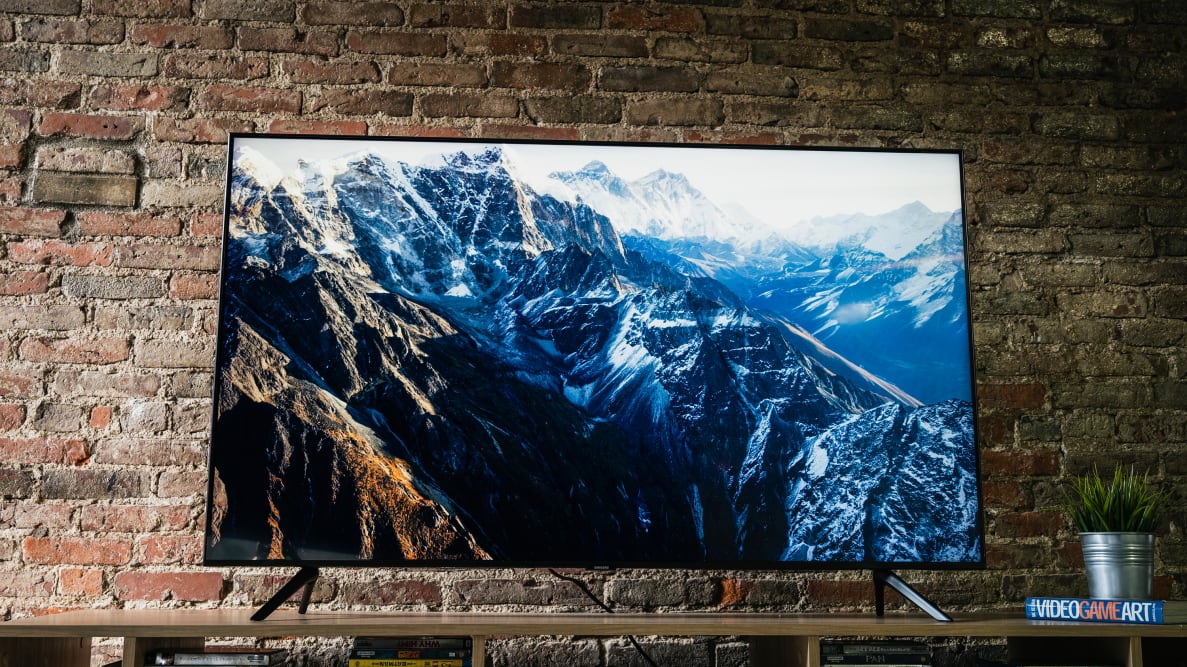Pros
-
Sleek design
-
Good picture quality
Cons
-
No quantum dots
-
Could be brighter
The TU8000 series is one of Samsung's mid-range offerings for 2020, and while it unfortunately doesn't come with quantum dots in tow, it nevertheless aims to impress you with performance that punches above its weight class, not to mention Samsung's usual penchant for sleek, modern design and snappy smart features.
While the TU8000 manages to succeed in delivering commendable marks in certain categories, its overall performance isn't quite as good as other, similarly priced TVs. The reality is that this is an incredibly competitive price bracket, and although the TU8000 is solid, there are better options on the table for anyone who isn't committed to the Samsung lineup.
(Note: Due to COVID-19 complications, this review leans heavily on test results in lieu of hands-on time with the TV.)
About the Samsung TU8000
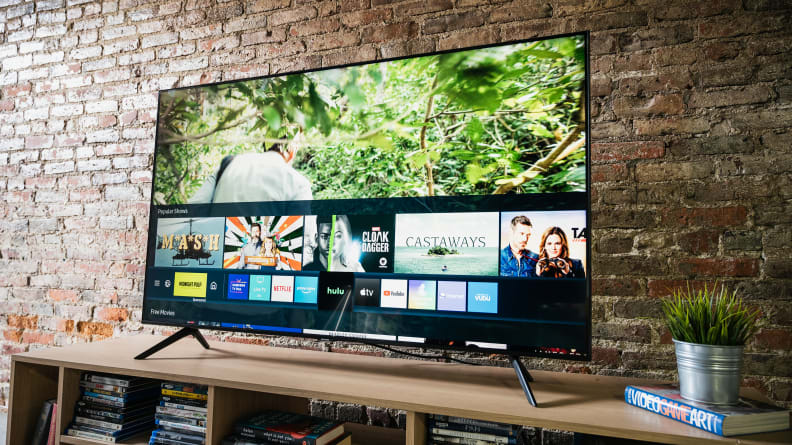
The Samsung TU8000 comes with a built-in, Tizen-powered smart platform that will feel familiar if you've used a Samsung TV in recent years.
The Samsung TU8000 is available in six sizes:
- 43-inch (Samsung UN43TU8000FXZA), MSRP $349.99
- 50-inch (Samsung UN50TU8000FXZA), MSRP $399.99
- 55-inch (Samsung UN55TU8000FXZA), MSRP $499.99
- 65-inch (Samsung UN65TU8000FXZA), MSRP $699.99
- 75-inch (Samsung UN75TU8000FXZA), MSRP $999.99
- 85-inch (Samsung UN85TU8000FXZA), MSRP $1,799.99
We bought a 55-inch Samsung TU8000 for our lab tests, but different sizes of TVs in a series tend to perform very similarly to to one another. With this in mind, we expect that the only major difference between the 55-inch Samsung TU8000 and any of the other variants is screen size.
Here's a rundown of what you're getting with the TU8000, regardless of which size you choose:
- Panel type: LED (edge-lit)
- Resolution: 4K (3,840 x 2,160) resolution
- HDR support: HDR10, HDR10+ HLG
- Native refresh rate: 60 Hz
- Color: DCI-P3/10-bit color space
- Smart platform: Yes (Tizen OS)
Performance Data
Before testing each TV, we make sure the panel is on and receiving a continuous signal for at least 24 hours, allowing the pixels plenty of time to warm up. The Samsung TU8000 received the standard warm-up time before any readings were taken.
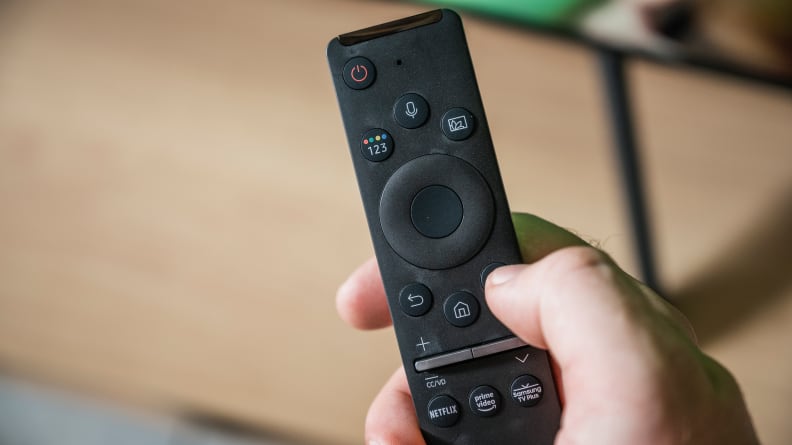
The TU8000's included remote control is slim and easy to use.
For both SDR tests and HDR tests, we used the Samsung's “Movie" picture setting. We’ve chosen these settings because of their accuracy, but results may vary across picture modes.
We use a standard ANSI checkerboard pattern for most of our basic contrast tests—including the ones reported below—but we also use white and black windows ranging from 2% to 90% to test how well the contrast holds up while displaying varying degrees of brightness.
I'll expand on our test results throughout the review, but for now, here are some key takeaways:
• HDR contrast (brightness/black level): 342 nits/0.050 nits (ANSI checkerboard) • SDR contrast (brightness/black level): 276.2 nits/0.040 nits (ANSI checkerboard) • HDR peak brightness: 349.2 nits (40% white window) • HDR color gamut coverage: 88% (DCI-P3/10-bit) • SDR color gamut coverage: 96% (Rec.709)
Connectivity
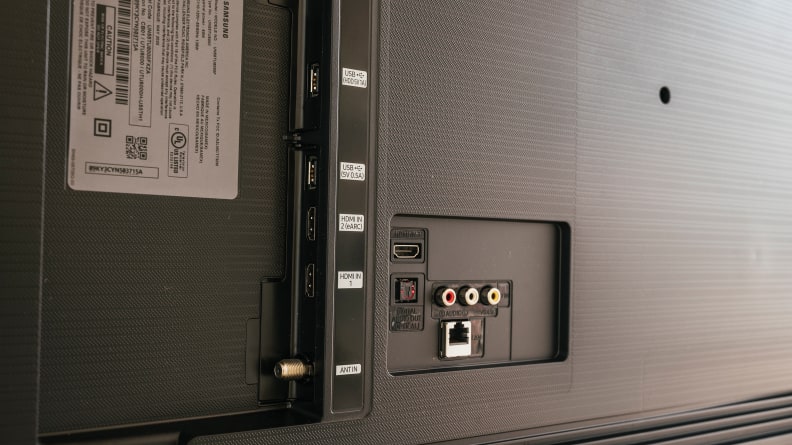
You won't find any fancy-shmancy features on the back of the TU8000's panel, but its connectivity options are robust enough for most folks' living room setup.
The Samsung TU8000 features a perfectly reasonable selection of connectivity options, particularly given its mid-range status. Here's a look at what you'll find on the back of the TV:
• 3x HDMI 2.0 (1x eARC) ports • 2x USB 2.0 ports • Composite input • LAN ethernet port, RF input, optical audio output
What We Like
Great contrast for the price
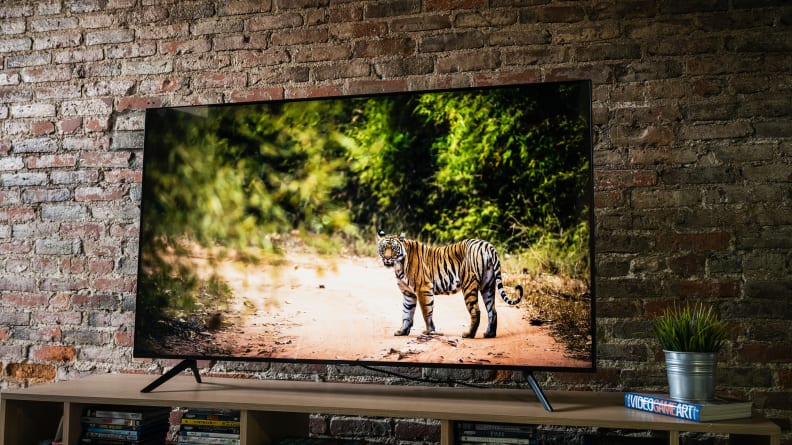
While the TU8000 doesn't get as bright as some of its closest competitors, viewers will nevertheless enjoy dependable, well-rounded contrast.
Despite the TU8000's relative dimness compared to brighter TVs in this price bracket (which I'll expand on shortly), the TV is sporting a seriously good contrast ratio for an edge-lit LED TV. Our lab tests revealed a black level that hovers at around 0.04 nits during most content coupled with an average peak brightness of around 275 nits in SDR and 300 nits in HDR. For the non-nerds out there: those are really good numbers for this price range.
Now, it's true that the TU8000 isn't as bright as some of its competition, but viewers will nevertheless enjoy a well-rounded picture with solid contrast. The TU8000 features better contrast than most entry-level TVs, and the difference in performance might be worth the difference in cost if you're trying to decide between the TU8000 and something like last year's ultra-affordable [TCL 4-Series.
Rich color production
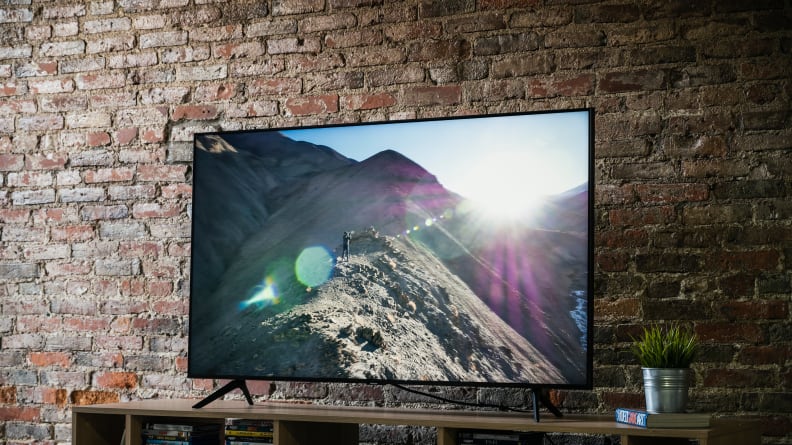
Most SDR content will look great on the TU8000, but if you're hoping for an HDR experience that covers more of the extra-wide color gamut, you might be disappointed.
Just as impressive as the TU8000's contrast is the TV's rich, accurate color production. You certainly won't be enjoying the type of expanded HDR color production you're more likely to find on top-shelf HDR TVs (remember: no quantum dots), but given the TU8000's price tag, there's plenty to appreciate here, particularly when watching SDR content.
If what you're after is affordable, quantum-dot-enhanced color, you'll no doubt need to narrow your search to TVs equipped with quantum dots. Even mid-range QLED TVs will offer better color production in HDR. That said, if you're just looking for a reliably good-looking 4K TV, the TU8000 looks far better than most entry-level TVs. Unfortunately, those entry-level TVs tend to cost substantially less, too.
The essence of polish
While we can't comment on this with as much certainty due to Reviewed's altered TV testing approach at present (due to the pandemic), we can say with assuredness that no matter which size TU8000 TV you go for, you're going to really love how sleek and fashionable it is.
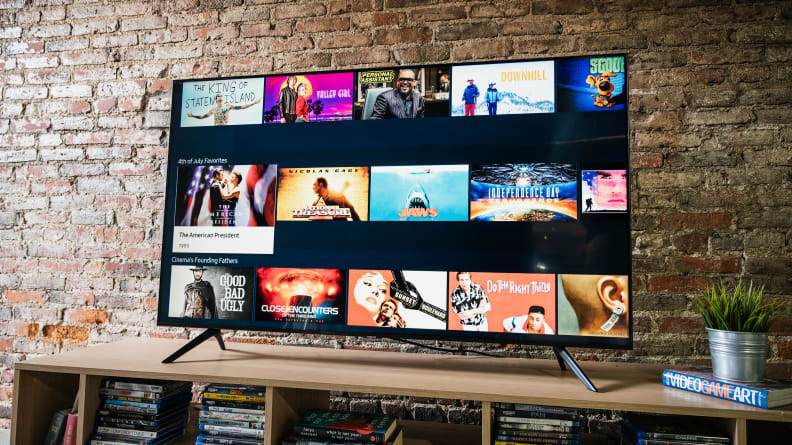
From its sleek, minimalist design to the elegantly designed on-board smart platform, the TU8000 is a seriously handsome TV for the price.
Something Samsung does consistently well across its TV lineup—whether they're high-end QLED models or something a bit more modest, like the TU8000—is bring an inimitable level of polish to the design points. This is a good-looking TV, and its on-board menus and software style follow suit.
While the Tizen-based smart platform isn't our favorite from a usability perspective—we're all about Roku, honestly—but there's no denying that the smart platform features here are sveltely designed, at least.
What We Don't Like
Doesn't get as bright as some of its direct competitors
While we would've been thrilled with the TU8000's peak brightness levels a few years ago (it eclipsed 340 nits in some of our HDR tests), the reality is that there are TVs in this price range that get brighter. For instance, we clocked the 2019 Vizio M Series Quantum at about 400-500 nits on average, and the 2019 TCL 6-Series climbed as high as 800.
It's no surprise, really: Both the M Series Quantum and the 6-Series are equipped with quantum dots, which are usually only paired with LED backlights that get exceptionally brighter than average. The TU8000 is not a quantum dot TV, so while its peak brightness levels are impressive for a mid-range, non-QLED TV, you might find yourself asking why you oughtn't invest in a mid-range QLED TV if brightness is what you're after. After all, the TU8000 is roughly the same price as aforementioned competitors.
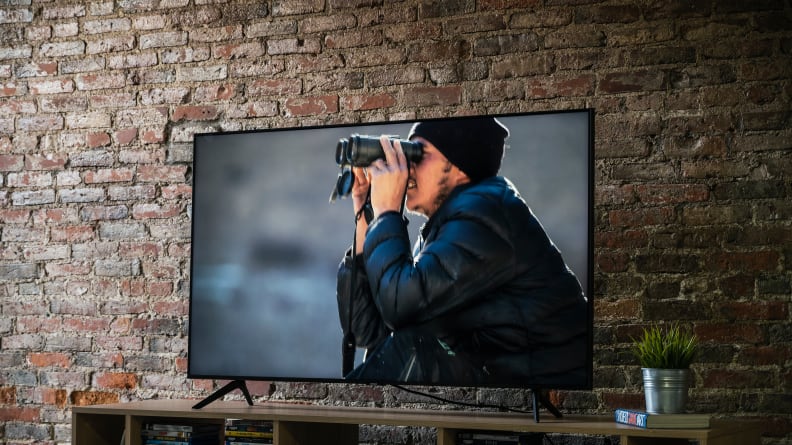
Like most TVs in this price range, the TU8000 is limited to a native refresh rate of 60 Hz, which means the picture refreshes 60 times per second.
Middle-of-the-road motion handling
The TU8000 features a native refresh rate of 60 Hz, and although that spec is to be expected with TVs in the TU8000's price range, you might want to shop for a higher-end TV with a 120-Hz panel if what you're after is the smoothest possible motion handling.
Samsung included a handful of motion enhancement tools in the TU8000's software—"LED Clear Motion," for example, toggles the TV's optional black frame insertion feature, and "Auto Motion Plus" will enable motion smoothing—but these enhancements won't eliminate judder without introducing the dreaded soap opera effect.
Should You Buy It?
Yes, but only if you have your heart set on owning a Samsung TV
While I have far more positive things to say about the TU8000 than I do negative, the question I keep finding myself coming back to is this: If I were considering the TU8000, why wouldn't I just buy a 2019 M Series Quantum, a 2019 TCL 6-Series, or wait for Vizio to release the 2020 version of the M Series Quantum? Even if you limit the options to TVs released in 2020, the soon-to-be-released M Series Quantum is slated to cost around $549 for the 55-inch model—that's about $50 more than the Samsung TU8000, and if the new M Series is anything like last year's, it'll surely be the better-performing TV.
So why would someone not want to choose a mid-range, quantum-dot-enhanced TV over the Samsung TU8000? I suppose if you're a diehard Samsung fan, you might be willing to invest in the TU8000 despite the fact that it's not quite as good as some of the non-Samsung competitors I've outlined above. Perhaps you enjoy the Samsung design aesthetic or the Tizen smart platform interface.
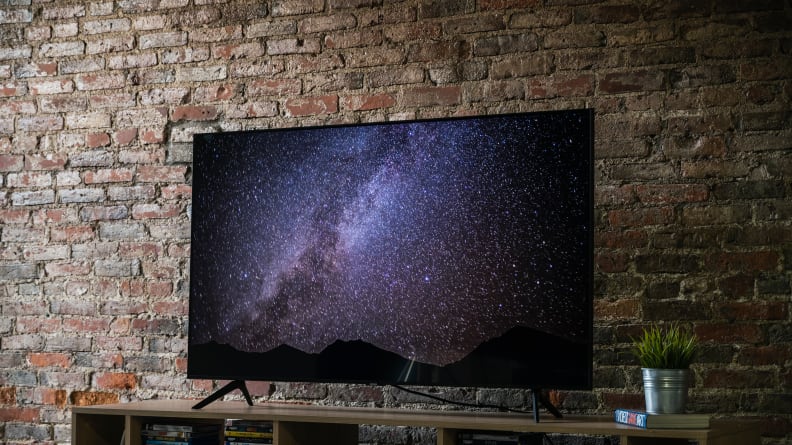
If you're a diehard Samsung fan, the TU8000 is a great mid-range solution. If you don't absolutely need a Samsung-branded TV, there are better options out there for similar prices.
If you're interested in learning more about the two 2019 TVs I've name-dropped as potential alternatives to the TU8000, check out my Vizio M Series Quantum vs. TCL 6-Series head-to-head. Just keep in mind that we'll be reviewing the all-new M Series Quantum in the very near future.
If you'd rather stick with the Samsung brand, the TU8000 is a great way to secure a mid-range 4K/HDR TV, so long as you don't mind the knowledge that there are slightly better options available for the cost.
Meet the tester
Michael Desjardin graduated from Emerson College after having studied media production and screenwriting. He specializes in tech for Reviewed, but also loves film criticism, weird ambient music, cooking, and food in general.
Checking our work.
Our team is here to help you buy the best stuff and love what you own. Our writers, editors, and experts obsess over the products we cover to make sure you're confident and satisfied. Have a different opinion about something we recommend? Email us and we'll compare notes.
Shoot us an email